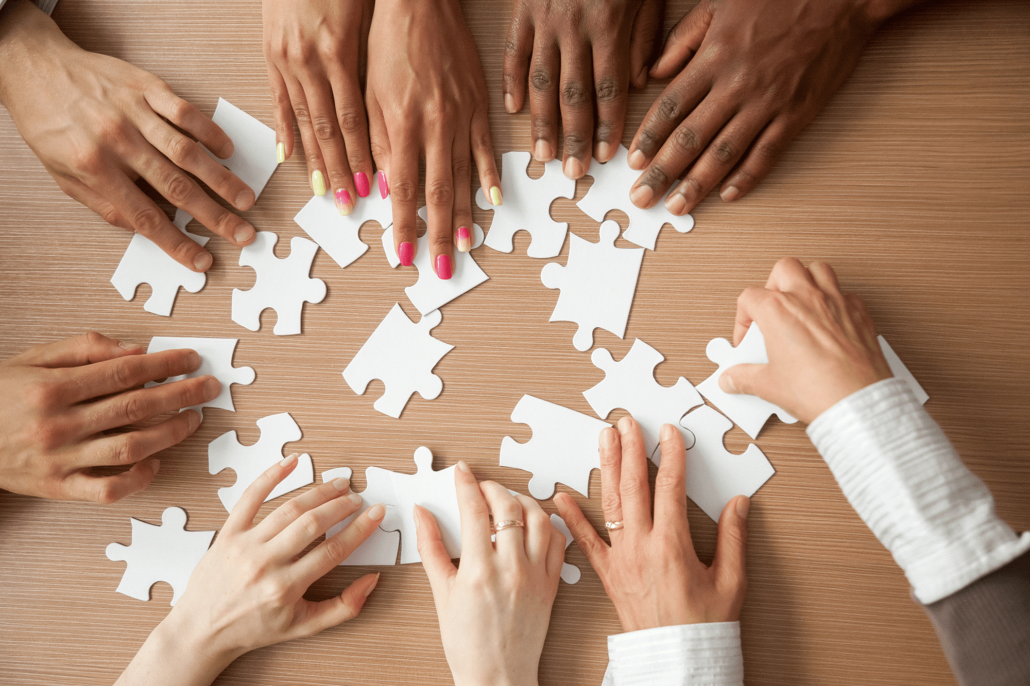4 Reasons Survivors and Families May Not Participate in Retinoblastoma Research, and Ways to Improve Engagement.
Originally Published Monday February 18, 2019
Survivor participation in retinoblastoma research is key to understanding the long-term impacts of this cancer, and to improving care for survivors, children in treatment and families. But many barriers to participation hinder this research. Len Burns, a totally blind bilateral Rb survivor and licensed family therapist, considers four major barriers, and opportunities to overcome them.
Patient participation in research is critical to the future improvement of the care for retinoblastoma survivors and their families over their lifespans. However, there are many barriers to patient participation in retinoblastoma research that aims to understand the long-term impacts.
Visual impairment and blindness are a frequent part of retinoblastoma survivorship. This has many implications in ordinary human activities, as well as presenting challenges to research participation. Many tools used in research utilize technology that may be inaccessible to an individual who is visually impaired or blind.
A second barrier to participation by many survivors and family members is the revisiting of memories and traumatic experiences encountered during treatment. While highly familiar to many people in the retinoblastoma community, this emotional aspect is often not considered when designing research. Many of us value research, but the unearthing of our experiences is so painful that we prefer to let it rest.
Many survivors with sight loss are wary of divulging their personal psychological experience in a medical setting. When harmful perspectives already exist in the professional setting regarding individuals with disability, experiences can be misinterpreted, serious consequences for a patient. Trust among individuals with disabilities has been significantly tested in this arena.
A final barrier is simply distance. We are a small community spread throughout the globe. It is very challenging to conduct research among a small group of people who are far flung, often in remote corners of the world.
1. Accessibility Impacts Research Participation
Imagine you have been invited to participate in a study to evaluate the long-term neurological and psychological impact of treatments for childhood cancers. You understand the importance of this research to improve quality of life for your community and are committed to doing your part.
Participation will include traveling to a university hospital setting and engaging in a number of tasks that will be completed on a computer. You are an experienced computer user who utilizes technology daily to work, play, and engage in daily activities such as shopping and social media. You have fine-tuned your personal technology with software and strategies to assist you. You are an expert in what works well for you.
You arrive at the university hospital setting to a disturbing discovery. The assessments you will be required to complete run on technology you are unable to use independently. Many involve visual games, others questionnaires that delve into matters you consider very personal.
You are casually informed this will not be a problem, because an amiable human has been tasked with assisting you. You now must work cooperatively with a stranger to complete on-screen tasks that you cannot directly access, and you will require assistance to complete questionnaires containing highly sensitive information about yourself, known only to those very close to you.
I have several questions for you.
First, would you participate in such a process?
If you did choose to participate, how truthful would you be when required to complete sensitive questionnaires assisted by a complete stranger?
Finally, given the variables introduced into this process by the accessibility problems, would your responses measure the variables intended by the research instruments?
Many of us know versions of this story. We want to contribute to research. We are committed to helping build a better future for other survivors and families and children still in treatment. Yet, confronted with these scenes, we may well choose to decline. And even if we move forward as a participant, we question how meaningful our participation is to learning.
While on this topic, consider that many of us face a similar problem each time we are required to complete the intake process in a medical setting. If you can complete such a process independently, would you be as truthful and descriptive if you had to complete a detailed intake about a sensitive matter assisted by a third-party? As a survivor who has walked this path many times, I can tell you I have at times been less truthful and descriptive because of the nice person taking down my responses.
There are no simple solutions to these barriers, but here are several considerations for discussion.
- Inclusion begins with the designers of tools intended to gather research data. My challenge to researchers is to collaborate with people with disabilities to design tools that are both accessible and gather the data you require. This means the involvement of people with disabilities from the very beginning and a deep understanding of how to gather information from people who may process the world in a very different way than your own. If you design tools in a manner usable by most people from the start, many of the above issues are no longer barriers.
- Consider who will be participating in your research and, given the available strategies you have at present, how to include them as fully as possible. This might mean that if a participant task is playing an on-screen game, you find a different strategy for gaining the same information. You will need to account for these factors in your research design. I appreciate this can be challenging, but the real world is often complicated. If your commitment is to gather truly diverse data that reflects the genuine reality, it will be worthwhile.
2. Medical Trauma Impacts Research Participation
There are precious few retinoblastoma survivors and members of their families who have not been shaped by the trauma of an early cancer diagnosis and the treatment that followed. The degree and nature of the trauma varies widely, but within the retinoblastoma community we regularly experience and observe the consequences of extreme stress on families and survivors, and the long range psychological impact.
It is important to emphasize that the apparent severity of the diagnosis and treatment often does not correlate with the severity of trauma. We know survivors and families with what would be considered excellent outcomes who never heal from the experience. Many years later, serious problems persist. Others who have experienced ongoing battles with cancer and serious medical consequences extending throughout their lives may exhibit strong coping skills and good quality of life. This pattern is often found in trauma research, but remains undocumented within the retinoblastoma community.
Our challenge is how to engage survivors and families in retinoblastoma research to better understand the life struggles people face when many would prefer to put the entire experience behind them. There is no simple path to address these barriers, but a good place to start is through education of the medical/research community about the experiences and struggles of many of their patients. There are medical professionals who are aware and sensitive to the challenges of survivorship, but all too frequently support is limited strictly to medical protocols.
It is critical that we receive educated follow up care based upon our individual history, including an assessment of the psychosocial impact of survivorship upon our lives. This can be used as a first step to identifying critical areas in retinoblastoma research, as well as strengthening the relationships between the survivor community and healthcare providers. This can serve as a bridge to future research participation.
As a survivor, I am far more likely to walk through the fires of my history in the interest of research if I have built trust in the people who request my participation. In my own experience, when I raise my personal trauma history in a setting where people are reasonably aware, my concerns are usually taken seriously. However, I have not yet experienced the providers of long-term survivorship care taking the lead. I would know this when checking in with me on psychosocial issues of my life receives the same degree of import as that given to medical challenges.
My concern is that the very people most impacted by trauma are least likely to raise these issues due to lack of awareness, or fear for the all too real negative consequences of stigma. Leadership by professionals might well inspire me as a survivor who has struggled with trauma related issues over my lifetime to say “yes” if approached with a request to participate in research. Most of us humans are far more likely to take risks when asked by people we have come to trust.
3. Risk of Disclosing Experiential Information
Many of us with disabilities are unwilling, or very wary, of discussing the emotional impact of our experience with researchers or professionals. We have a very real fear that such a disclosure could be taken out of context or misinterpreted through the lens of commonly held negative views among professionals about disabled people.
Our own painful experience and those of others have taught us that people in such positions often have power and influence that can lead to serious real-world consequences. For example, many of us know personally people in positions of authority who do not believe blind or visually impaired persons are competent to parent children, who would not hesitate to use their positions of power to turn an ordinary question into the basis to interfere in a survivor’s reproductive choices or custody of their child.
In the last month, I have twice had to disclose in highly specific detail the impact of PTSD with which I still at times struggle, following my retinoblastoma treatment many years ago. Both of these disclosures were in a medical setting. I had to choose between hiding information from those assisting me, which could have placed me at risk, and revealing detailed information that in the wrong hands could one day result in damage to my career as a mental health professional.
Yes, I am very familiar with confidentiality laws in U.S. healthcare, and I also know how professionals often circumvent such regulations to “help out” a colleague. As a blind professional, I already face negative attitudes in my profession. Have I now compounded this by placing sensitive information in my medical records? I can hope not, but in the back of my mind, I know I took a chance.
Would I take such a risk in the interest of contributing to research? If I chose to participate, would I tell the truth about my experience, especially if I had to relay my answers via a third party? All I can say is that the decision would be difficult, followed by a tough choice each time I had to answer a sensitive question.
4. We Are a Small, Widely Dispersed Community
Retinoblastoma is an equal opportunity trouble maker. It has no regard for nationality, ethnicity nor class. We are a highly diverse community scattered throughout the world. In developing countries the priority is early detection and developing treatment strategies where resources are scarce and people are scattered in locations far from sophisticated medical centers.
Collaborations such as the Retinoblastoma: One World, One Vision held in January of 2007, and the One Retinoblastoma World meetings, highlight the kind of thinking needed to improve research and survival globally. It requires international partnership, resources and the expertise of those highly familiar with the challenges of each region to lead to significant improvement.
Survivor focused retinoblastoma research remains largely unaddressed. In regions with a significant population of survivors, we are still relatively very few in number, and geographically scattered. Social media helps us form a stronger community. We are a diverse group of people, but similar concerns resurface time and again in our conversations.
The internet could be used in creative ways to facilitate research. While it is true that some survivors still have limited or no access to the internet, we must start with what is possible, acknowledging our limitations. We could work to engage the survivor community that we can identify, encouraging participation in retinoblastoma research conducted via surveys or interviews using audio or video chat. Key members of the community could be engaged to encourage participation.
In Conclusion
As a member of the survivor community and experienced mental health professional, I am deeply concerned by the number of queries I read on a regular basis from survivors reporting serious struggles with anxiety, depression and posttraumatic stress disorder (PTSD). Many of us have struggled with these issues through our lifetimes, at times with few or inadequate resources to assist us. I greatly fear that the people most effected are receiving the least assistance due to lack of resources and the stigma associated with mental health treatment.
There is little to no research regarding the long-term impact of childhood cancer in the very early years on survivors and families, and few clinicians truly familiar with our struggles. We do not know who is most at risk and why, nor how best to help people build the strengths they will need to cope throughout their lifespans. Many of us discuss these issues among ourselves, but up to now we cannot document the impact on our lives, nor advise others how best to assist us. When this lack of knowledge is combined with the stigma of visual impairment and blindness within most cultures, the current picture is often painful, and at times may seem hopeless.
Great improvements in treatment have been made in recent years, but the retinoblastoma experience does not end when treatment is over. It is time to recognize the seriousness of this cancer experience over our lifetimes. It is time to develop effective patient participation in retinoblastoma research. It is time to begin building a foundation on which we can better understand the psychosocial impact, and create effective helping strategies. Knowledge and enhanced care for survivors, for families at all stages of the journey, and for children still in treatment.
About the Author
 Len Burns, M.A. LMFT is a long-standing participant in the retinoblastoma community, with a deep commitment to improving the lives of Rb survivors and the support of families. He has been a licensed family therapist in California since 1990, working in private practice as well as the nonprofit sector. He currently consults on issues of mental health as well as digital accessibility.
Len Burns, M.A. LMFT is a long-standing participant in the retinoblastoma community, with a deep commitment to improving the lives of Rb survivors and the support of families. He has been a licensed family therapist in California since 1990, working in private practice as well as the nonprofit sector. He currently consults on issues of mental health as well as digital accessibility.
He has lived on the central California coast since 1980, sharing life with chosen family and Snickers, a contented brown tabby cat who keeps life real. Len is a serious runner, trains Jiu Jitsu several times a week and loves few things better than a long hike in the redwoods with a few friends.








Share this entry